Geniuslink + Amazon: EPC, Improvement & ROI
-
Jesse is a Native Montanan and the co-founder and CEO of Geniuslink - or, as he likes to say, head cheerleader. Before Jesse co-founded Geniuslink, he was a whitewater rafting guide, worked at a sushi restaurant, a skate/snowboard shop, was a professional student, and then became the first Global Manager at Apple for the iTunes Affiliate Program.
- September 20, 2023
Affiliate marketing generates a lot of data but all too often that data sits in a silo and isn’t helpful.
We worked with a number of our clients, both big and small, to take some of their data and turn it into actionable information to try and help you answer three of the most common questions we get:

How much are other people making from their Amazon affiliate links?
We can answer this question by diving into the Earnings Per Click from both without (calculated) and with (actual) using Geniuslink. We also compare the average EPC across Amazon.com and the six most popular international affiliate programs. Jump to this section.
How much additional money should I expect to start making after using Geniuslink to monetize my international traffic?
The short answer is that “it depends” based on a few different factors that are unique to your site’s traffic and the products you recommend, but that doesn’t help you make an important decision. So, we dove deep into the numbers and have a good rule of thumb you can follow to get a quick calculation for estimating the upside you’ll see from monetizing your international traffic with Geniuslink. Jump to this section.
Even with making more money internationally is using Geniuslink worth the expense?
Geniuslink is a premium link management service and while the pricing is very affordable at the end of the day it’s an expense that needs to be considered. Does Geniuslink make you more money than it costs? A quick Return On Investment (ROI) calculation can answer that specifically for you but we’ve got a few numbers to share from ROI calculations we’ve done for other clients. Jump to this section.
Overview
We looked at over 2M clicks, from early 2018, that netted over $320K in affiliate commissions ($178K in Amazon.com / US commissions, the rest across coming from Amazon.ca, Amazon.co.uk, Amazon.de, Amazon.fr, Amazon.it and Amazon.es) to determine the average EPCs, monetization of international traffic and the ROI from using Geniuslink.
If you are interested in additional information about the breakdown of the clients in our data set and this analysis please find them in the “Details” section at the bottom, but let’s get started with the good stuff.
Earnings Per Click
Earnings Per Click (EPC) is my favorite affiliate Key Performance Indicator (KPI) as it takes two of the most important metrics — traffic / clicks and revenue / earnings — and combines them in a way that normalizes them. This makes EPC a great metric to compare across time periods, accounts or even different affiliate programs.
While it’s an important metric, it’s not one that I see published regularly, especially for Amazon’s affiliate programs. So let’s change that!
Please note that while a benchmark can be helpful to compare against it’s also important to note that the EPCs for Amazon are going to be vary quite a bit as someone pushing free or low cost products (eg. ebooks) with an audience that’s focus in a country that has a less expensive Amazon storefront (say Spain) versus someone selling higher cost products (eg. TVs) in Amazon’s top marketing – the US.
We’ve broken down our findings into a few different buckets so you can compare for where you are at today.
Without Geo-targeting
Across the data we had, we found that the average EPC when looking at just a client’s original, and largest program (their “base country”), was right about $0.05.
This means on average for every non-junk click you can drive to your affiliate links for Amazon you’ll net, on average, about a nickel.
So then twenty clicks should net you a dollar, etc. The median, or middle value, in our sample set was a little lower at 3.3 cents. The range went from a high of $0.116 all the way down to $0.003.
For this metric, we are comparing the total earnings from the client’s base country (US / amazon.com) and dividing that by their total clicks.
A geo-targeting service, like Geniuslink or Amazon’s OneLink, won’t increase the number of clicks a client gets but will distribute them to the Amazon storefront that is most appropriate for the shopper. For this baseline, we are assuming that the client was driving all of their clicks to a single store (Amazon.com) as they were before they started using Geniuslink.
With Geniuslink (aka with geo-targeting)
The data we have for clients, who by definition of being a client are using the Geniuslink service to automatically localize and affiliate their clicks for Amazon’s international array of affiliate programs, shows even higher numbers.
These numbers are “blended” EPCs that take the total commissions across the top seven Amazon affiliate programs (US, Canada, United Kingdom, Germany, France, Italy and Spain) and compare those against the total clicks the clients had for the same time period, the same value used in the EPCs shared above.
As the click counts stay the same as the “Before geo-targeting” numbers it’s easy to see the value that a geo-targeting service can add to an affiliate marketer with an international audience.
The average EPC was $0.069, a 38% improvement over the $0.05 average previously. The median was $0.053 (a 62.5% improvement), with the high being $0.139 (a 19% improvement) and the low being $0.011 (with a 241% improvement).
One thing to note is the crazy difference in the highest EPC only improving by 19% with localization and the lowest value improving over 200%. From my understanding, the the higher the EPC in the US store the more likely you have an affluent market you are selling to so you won’t see as much of a gain in going international. But it’s important to note that there is still gain or inversely money that you are leaving on the table by ignoring international commissions.
On the flip side, if your EPC is fairly low in the US market then one would argue that you aren’t converting your audience very well so using link localization is one of many ways (but a really good way) to increase those EPCs hence the 241% increase by taking advantage of Amazon affiliate link localization.
In working with clients we’ve seen EPCs in the mid-twenties of cents and we encourage clients not making at least one cent per click to focus first on building and optimizing their site and community before they start working with us to globalize their traffic ensure the right priorities in their workflow and a good return on investment from using Geniuslink.
It’s important to note that even though we included total clicks we did not including all the commissions a client could have been earning across all 13 of Amazon’s affiliate programs due to some technical challenges. This means that commissions from the Amazon affiliate programs Australia, Japan, India or Mexico, for example, are not included, but these clients could have certainly earned them. This means that the actual blended EPC would be higher (more revenue but the same number of clicks).
US vs. International
We’ve almost always found that the base country (the country relating to the link that was originally used) tend to have higher EPCs than international EPCs. Along the same lines, we tend to find that clicks for the US tend to have the highest EPCs compared to the other international storefronts. We believe this happens for two reasons.
First, the US is the largest Amazon storefront, therefore it’s much more likely that they have for sale the specific product being recommended. Second, the US has the largest market share (~ 50%) so more people are likely to buy something, even if it’s not the recommended product, and thus will create some sort of affiliate commission.
From our dataset we found the average base country EPC to be $0.111 while the average international EPC to be about $0.031.
Improvement from Geniuslink
It’s a lot easier to decide about investing time and resources into a project if you have a clear guess at how well that investment will pay off. But you often get into a chicken and egg conundrum where you need data to estimate the value but you often can’t get the data until you do some or most of the project.
We’d like to help you avoid this by sharing our “Multiplier” to help calculate the improvement you might see by turning on Geniuslink for your Amazon affiliate links.
Again, it’s important to note that every client is going to see different amounts of lift in revenue from turning on a service like Geniuslink as their site, traffic and the products they are recommending will be different. This is merely a benchmark to give you some basic directional guidance in your analysis of deciding if geo-targeting makes sense for your Amazon affiliate links.
The “Multiplier”
On average for every 10% of international traffic a client sees they are able to increase their original / base country revenue by about 5% from turning on Geniuslink’s Amazon link localization and auto-affiliation.
For example, if a website has 20% international traffic then using Geniuslink should add a bump of approximately 10% to their total Amazon commissions due to monetizing their international clicks.
If a site had 50% international traffic then they would see an approximately 25% bump, etc.
Calculating Your Improvement
Along with the Multiplier you need two bits of information to customize the “Improvement Ratio” and figure out the approximate increase in revenue for your site – your current Amazon affiliate commissions and your percent of international audience.
Depending on where your affiliate links live you should have some way to get some geographical breakdown of your traffic no matter if it’s social media, your website, or someone else’s website.
Each social media platform varies a little but for YouTube you can simply go to the Creator Studio button from the drop down for your user icon then click Analytics, Watch Time, then Geography. From there you are looking for your base country (the country that matches the store you are building links from) and subtracting its percentage from 100.
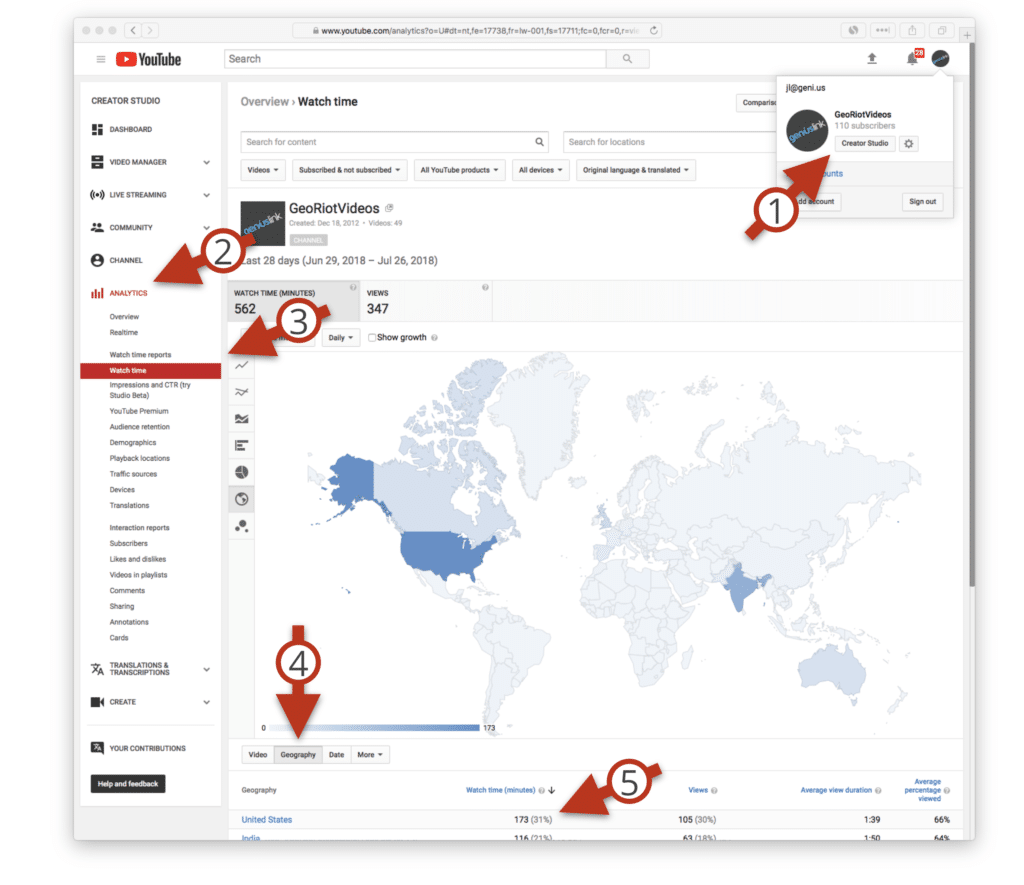
For a website you own or manage, then Google Analytics is your best bet into this number. Click “Audience” then “Geo” and “Location” to find a breakdown of your traffic and again grab your base country and subtract it’s percentage from 100.
If your links primarily live on a website you don’t own and they don’t have any analytics you can easily access then a service like SimilarWeb can help you find the approximate distribution of international traffic. Again take the base country and subtract from 100.
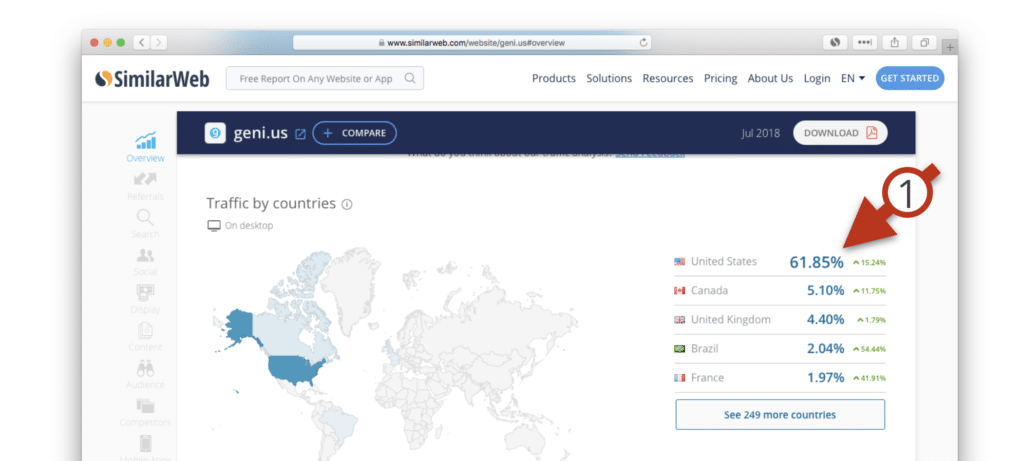
The Equation
Use the following tool or the steps below to calculate your Improvement Ratio and the increased commission amount.
Calculate Your Improvement
1.) Once you have your international traffic you treat that as a whole number. Eg. 70% international becomes simply 70.
2.) Next divide that by 10. (eg. 70/10 = 7).
3.) Now you multiply that new number by the “Multiplier” of 5. (eg. 35)
Move this back into a percentage by moving the decimal two places to the left or just adding the percent sign back. Hold onto this number it’s “Improvement Ratio” and you’ll use it in a moment. (eg. 35% or .35)
Now you need your total Amazon affiliate commissions from your base country. This can easily be found by logging into your Amazon Associates Central dashboard, jumping over to the “Reports” tab, selecting a time period that makes sense (I think last month is a good basis) then grabbing your commission number from the Summary section. Let’s call this your “Base Commissions” and for this example let’s assume $1,000.
4.) Now fill in the numbers to this equation: Base Commissions X (1+ Improvement Ratio).
For the example above our base commissions were $1,000 and our Improvement Ratio was 35% so our equation would be $1,000 X (1+.35) = $1,350.
So following this example, you’ll be adding about $350 per month with localizing your links to give us a new total $1,350 a month.
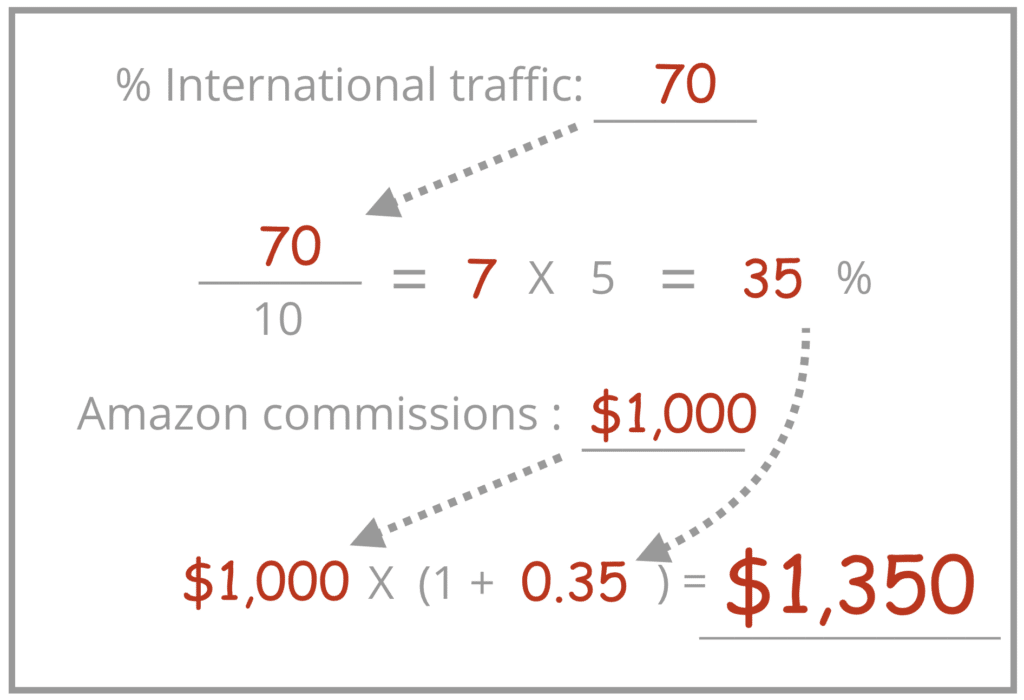
While the revenue increase is often the primary metric you use to make a decision it’s also important to quickly note some of the other benefits of a service such as an improved shopping experience, link health reports, better organization, more insights into your clicks, etc.
The math behind the “Multiplier”
To determine the “Multiplier” we took each of the individual clients included in our test and grabbed their total traffic and base country traffic numbers from inside their Geniuslink dashboard then grabbed their commissions from each of the top seven Amazon affiliate programs used in this test. Those commissions were then all converted into US dollars.
The Multiplier comes from dividing a client’s percent of international commissions by their percentage of international traffic.
The calculation of international commissions is simply a sum of all of their commissions that are international divided by their total commissions including their base country. These numbers ranged from 70% all the way down to 7% but averaged out at 31%.
The percentage of international traffic is even easier to calculate and is simply the total clicks minus the clicks from the base country. Again there was a wide range of approximately 90% international traffic down to 30% international traffic with an average of about 58%.
If we divide the average international commissions by the average international traffic we get .54. Conversely, if we do this calculation per client in our data set first then average those together the number is .49 which leads us to simply run with .5 to keep the math simple.
Historically
We’ve done the heavy lifting and number crunching on this back in early 2016 with all of 2015’s data for a similarly configured data set and the numbers centered around .35 meaning that in 2015 for every 10% of international traffic, one of the clients in our sample set had we’d be able to add 3.5% to their existing affiliate commissions.
The significant improvement in the opportunity to increase a client’s revenue from international commission (.35 in 2015 to .5 in 2018) likely comes from a handful of things.
While we’d like to take a lot of the credit with our intense focus on improving our link localization algorithms it’s not fair to discount the growth Amazon has seen in its international storefronts from a catalog size perspective. Obviously the larger the product catalog is in each international storefront the easier it is for us to match with the correct product and provide perfect translation.
We also think that as Amazon has continued to expand internationally and expand the size of its product catalogs in those stores that international shoppers are becoming more conditioned to feel comfortable clicking on an Amazon link and knowing that the buying experience is possible.
Return On Investment
Looking at the benchmark EPCs with and without geo-targeting can give you some insight into where you could be. Further, doing the improvement forecast exercise described above can give you some directional insight into what geo-targeting can do for your total revenue. However, at the end of the day, you need to do a Return on Investment calculation to prove if Geniuslink is adding quantifiable value or not.
This is exactly why we give you a free trial — we want you to have some real numbers to look at and use for your calculations. At the end of the day, if you aren’t making more money from international commissions than you are spending on a service that facilitates those international commissions than the financially prudent thing to do is to stop.
From our data set, we found that the Return on Investment for the clients include averaged 8.72X with a median of 7.46X. This means that for every dollar a client spends with us they should see between $7 to $9 of additional revenue.
Please take a moment to calculate your ROI from using Geniuslink. At a minimum we want our clients to have at least a 2.5X ROI and if you are falling below these metrics please contact us so we can dive into your account. A low ROI is often a good indicator that something wasn’t set up correctly (eg. typo when adding a TSID or tracking IDs, etc.) and is often easy to spot and fix with the help of our Client Success Team.
The Math
An ROI calculation is fairly simple and you need just two numbers for it — the cost of the service and the additional revenue (aka “gain”) from using the service.
The cost of using Geniuslink can be calculated fairly easily. Simply take your total clicks and multiply them by $0.002. This is a conservative way to estimate costs as we offer click volume discounts starting in the tens of thousands of clicks. If you really want to zero in on your exact costs while still in your trial you can jump over to our pricing page and use the slider to zero in on our costs. Of course, after your trial has expired the exact costs of using Geniuslink can be found in the billing section of your Geniuslink dashboard.
The gain, or additional revenue, comes from adding together all of the international commissions you are now taking advantage of due to your links working internationally. This would include adding up your commissions from Amazon.ca, Amazon.co.uk, Amazon.de, Amazon.fr, Amazon.it, Amazon.es and any of the other Amazon affiliate programs you are using. Of course, you need to remember to convert everything into US dollars as commissions are always reported in the local currency for each of the international Amazon Associates Central dashboards.
Once you have those two numbers, the equation is simply: (gain – cost) / cost.
Try calculating your ROI with the tool below:
More information about what you should expect to see in your analytics and revenue from the first two weeks of using Geniuslink is outlined in a previous post – Getting the Most from your Free Trial for Affiliate Marketers.
Details
For this analysis we looked at clicks and commissions from the first quarter of 2018 (January 1st through March 31st) for twelve clients. In this time period they generated a combined 2,198,293 clicks into the Amazon ecosystem which resulted in $322,898.39 in Amazon affiliate commission.
The clients used in this test promoted a variety of products but there was some concentration in traditional media (five clients had links focused across promoting books, music, TV, movies) and consumer tech (another five clients links promoting products across the computers & peripherals, photo/video and electronics categories). The remaining two in the group had a wide range of products they were promoting that spanned many categories.
Most clients were US based and started with Amazon.com links so therefore had US / Amazon.com as their base country. The clients used in this data set averaged a little over 100K clicks / month with the largest in the group pushing nearly 600K a month and the smallest in the group doing less 1K clicks per month.
If you would like to be included in future analysis such as this one please let us know. Please don’t hesitate to ask questions or share your EPCs, forecasted revenue Improvement Ratio or ROI results in the comments below.
Author
-
Jesse is a Native Montanan and the co-founder and CEO of Geniuslink - or, as he likes to say, head cheerleader. Before Jesse co-founded Geniuslink, he was a whitewater rafting guide, worked at a sushi restaurant, a skate/snowboard shop, was a professional student, and then became the first Global Manager at Apple for the iTunes Affiliate Program.
Author
-
Jesse is a Native Montanan and the co-founder and CEO of Geniuslink - or, as he likes to say, head cheerleader. Before Jesse co-founded Geniuslink, he was a whitewater rafting guide, worked at a sushi restaurant, a skate/snowboard shop, was a professional student, and then became the first Global Manager at Apple for the iTunes Affiliate Program.
Related posts
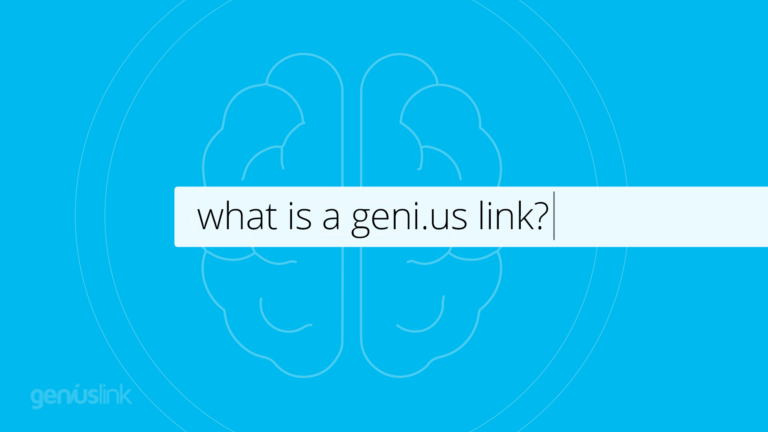
What is a Geni.us Link?

Building Diverse Income Streams with Doug Cunnington
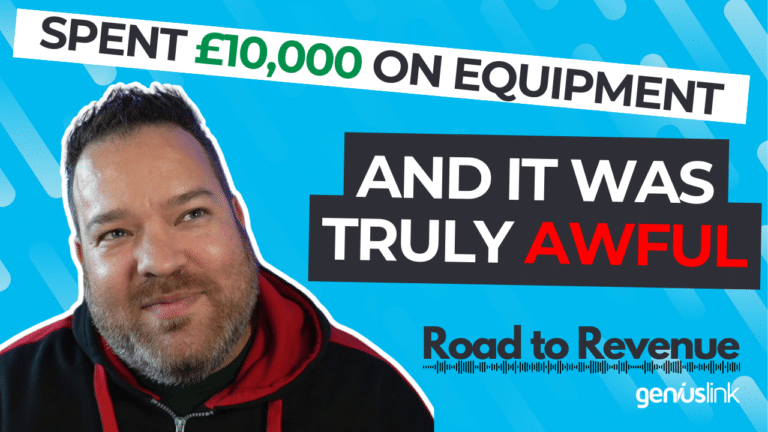
Building Wealth Through Video with Matt Hughes

Can you Include Affiliate Links in Emails?
More revenue from every link you share
Geniuslink makes localizing, tracking, and managing smart links dead simple, so you can earn more without added work.
